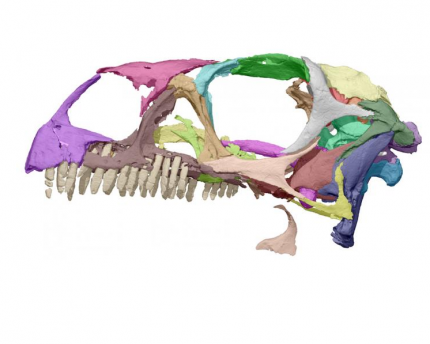Research: Study a dinosaur at home

Theoretically, yes. Using digital reconstruction, researchers made a 3-D printout of the skull of a Massospondylus -- a 200 million-year-old South African dinosaur.
Kimberley Chapelle, a doctoral student in the Evolutionary Studies Institute at the University of the Witwatersrand in Johannesburg, South Africa, used a computed tomography facility to rebuild every bone of a Massospondylus’s cranium and to examine tiny features such as nerves exiting the brain and the balance organs of the inner ear, according to a university news release.
Her research is available for anyone to read online. Better yet, a 3-D surface file of the skull is available to be downloaded.
The research, "A revised cranial description of Massospondylus carinatus...based on computed tomographic scans," by Kimberley E.J. Chapelle and Jonah N. Choiniere, was published in the journal PeerJ, Jan. 12.
RAINBOW DINOSAUR: A newly discovered species of dinosaur had rainbow colors and iridescent features.
The species, Caihong juji, lived 161 million years ago, displayed rainbow coloring and was the size of a duck. It had ribbonlike feathers that were “probably iridescent,” according to the Field Museum in Chicago, “with colors that shimmered and shifted in the light."
Discovered by a farmer in northeastern China, the species was described by an international team of scientists led by Dongyu Hu, professor in the college of paleontology at Shenyang Normal University in China.
Researchers determined the dinosaur’s appearance by analyzing the structure of melanosomes. (Melanosomes are defined by the Journal of Cell Science as, "the pigment granules that provide tissues with color and photo-protection.")
By finding birds with similarly shaped melanosomes, the scientists were able to determine what kinds of colors the dinosaur may have flashed. Hummingbirds were the best match.
The research, "A bony-crested Jurassic dinosaur with evidence of iridescent plumage highlights complexity in early paravian evolution," by Dongyu Hu, et al, was published in Nature Communications on Jan. 15.
Related:
Newly identified dinosaur not a feathered friend
Newly identified dinosaur a chicken from hell
Follow StudyHall.Rocks on Twitter or like us on Facebook and tell us what you think.

